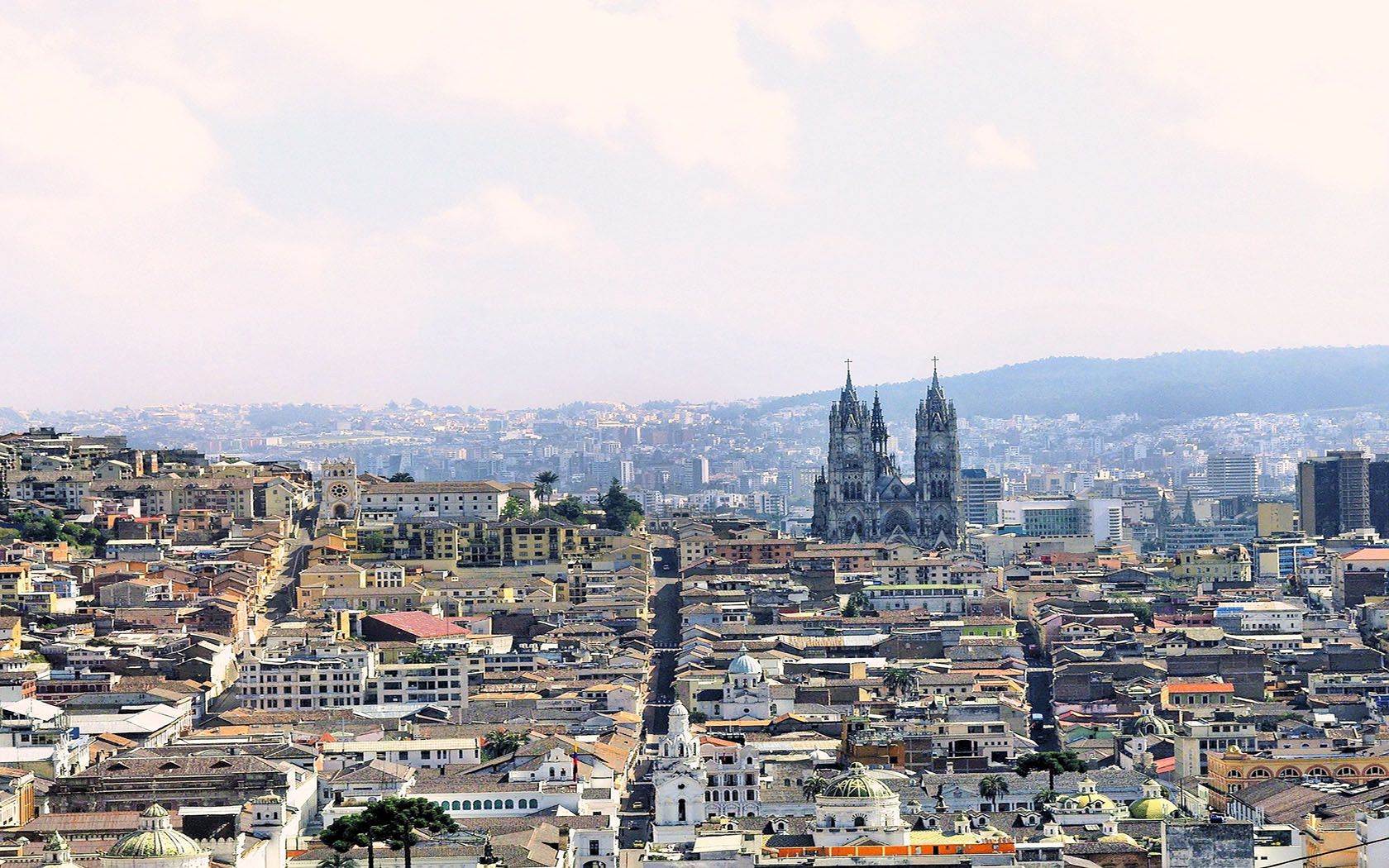Founded in the 16th century by the Spaniards on the ruins of an Inca city, Quito has been hailed by UNESCO as having one of the most beautifully preserved historical centers in Latin America. Strolling through its charming cobbled streets and maze of beautiful colonial buildings, it’s easy to see why. From Baroque-style monasteries to French Renaissance style palaces, here are our top five most photo-worthy buildings in Quito.
Most beautiful buildings in Quito
Iglesia de la Compania de Jesus
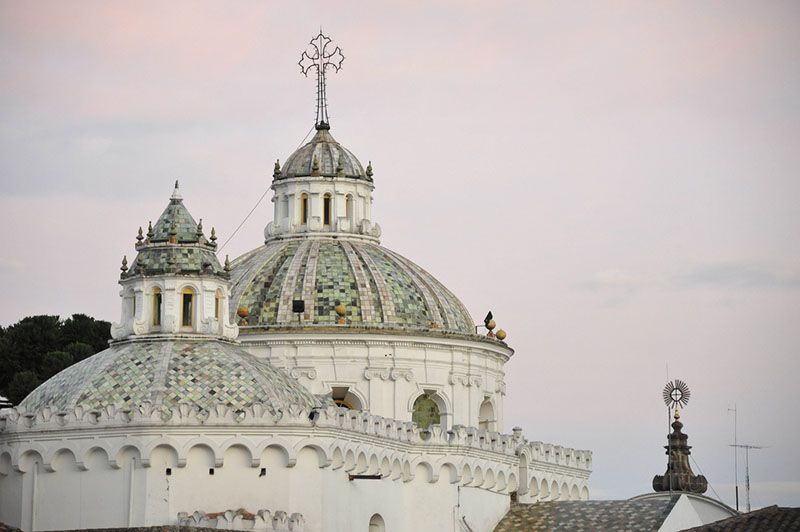
Like many other South American cities that were colonized by the Spanish, the religion of the day was Roman Catholicism. This meant many large churches and cathedrals were erected and are among the most impressive buildings in the city. One of the most striking of these churches is the Baroque-style Iglesia de la Compania de Jesus that’s considered by many as Ecuador’s most beautiful building. Construction began in 1605 and it took an extensive 160 years to complete. It’s known as the Church of Gold with its ornate green and gold domes and gold leaf décor — almost seven tons of gold leaf was used to blanket this marvelous interior (equivalent to USD 300 million at the time of writing) making it one of the richest churches in the world. Other details to note are the building’s perfect symmetry, the bright red walls that symbolize the blood of Jesus Christ and the murals of Ecuadorian plants and indigenous people along the pillars. You can take free guided tours of the building in English and Spanish.
Basílica del Voto Nacional
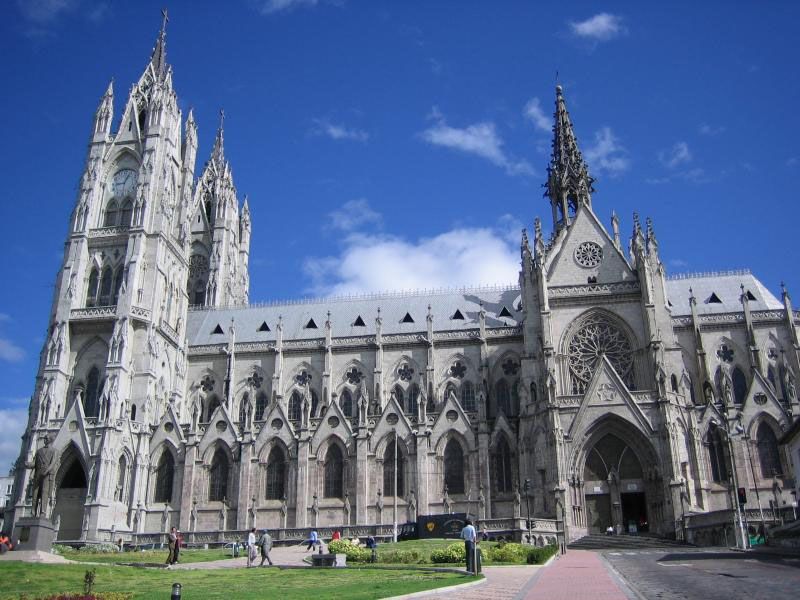
The building of the grandiose Basilica del Voto Nacional was proposed by a catholic priest in the late 1800s to signify Ecuador’s devotion to Christ. The president at the time issued a decree and construction began in 1887. However, it wasn’t until 1988 that the church that sits on a hill in the north of the city was inaugurated. The church is architecturally significant in that it was built in a neo-Gothic style with a native American twist. If you look a bit closer, you can see gothic characters in the form of animals native to Ecuador such as pumas, armadillos and iguanas. The stain-glassed windows are especially breathtaking and the sheer size of the building will leave you in awe. There are multiple levels to explore and a climb to the top of the towers is worth the extra fee providing you don’t suffer from vertigo or a fear of steep rickety stairs.
Hotel Plaza Grande
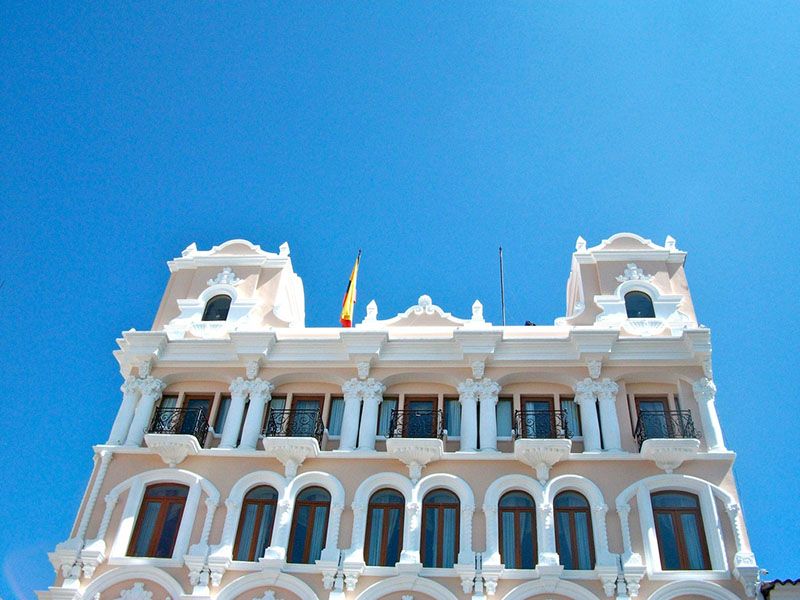
The Hotel Plaza Grande is a deluxe five-star hotel located next to the Carondelet Palace and Quito’s other major landmarks in the grand Plaza Independencia. The elegant baroque-style building spans five centuries. It was one of the first houses to be built during the founding of the city in the 16th century and was the family home for many wealthy families until it became the Majestic Hotel in 1943. The hotel closed down and was then used as administrative offices for the municipality of Quito until a group of investors restored the hotel in 2005 with 15 chic suites. Although the room rates might surpass your budget, it’s worth a visit to admire the façade the first-floor restaurant offers some of the finest views in all of Quito.
Palacio de Carondelet
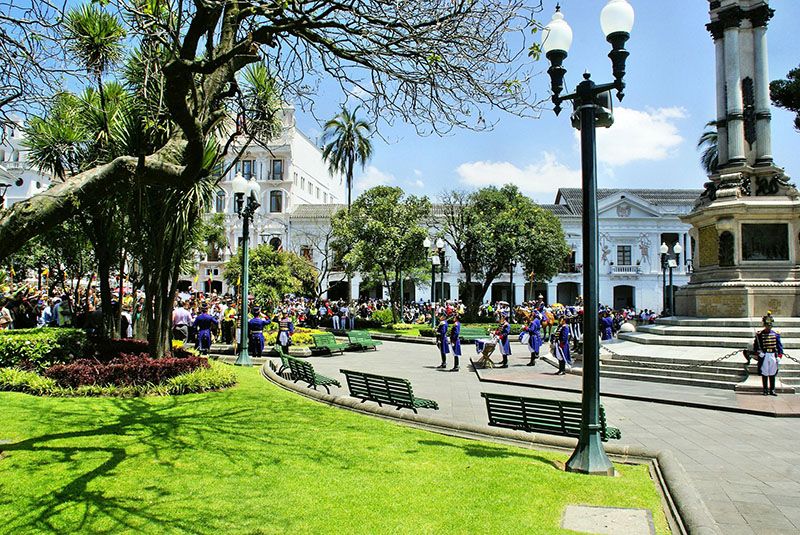
This gleaming white presidential palace was named after Baron Hector de Carondelet, the President of the Royal Council in the late 18th century. Although the palace was originally built in the 16th century, Carondelet led a full refurbishment of the building. The grandiose palace is the place of government and the home of Ecuador’s president, although in 2007 they converted part of the building into a museum for public access. The structure is built in the French Renaissance and Spanish Baroque styles. If you are lucky enough to be there for the changing of the guard you might get a glimpse of the President and his dignitaries, who sometimes attend the ceremony.
Teatro Sucre
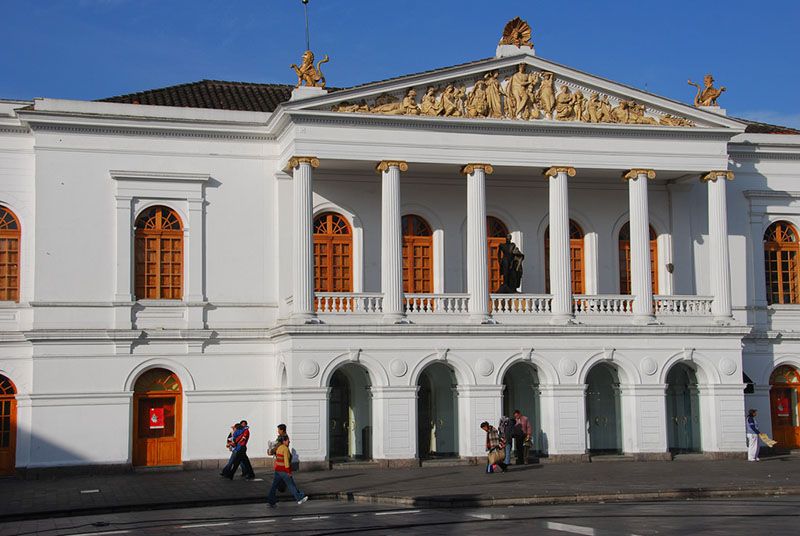
This is one of the oldest opera houses in not just Ecuador but all of South America and has a storied history. Once known as the “butchers plaza” where meat was bought and sold, it was also used as place for bullfighting from around 1670 to the late 1800s. It wasn’t until 1879 when the government turned it into a special events theater that it became the esteemed opera house that it is today. The building’s neo-classical architecture is reminiscent of Europe’s theaters with impressive marble arches and columns. If you don’t get a chance to see one of the shows at the theater, which plays host to a program of local and international productions and artists (just take a cushion as the seats aren’t very comfortable), poke your head in just to marvel at the interior and watch out for the street performers that often congregate outside.
Do you have any other favorite buildings in Quito? Share your stories in our comments section below.
Originally published on Ailola by Sophie Lloyd on February 12, 2018.
